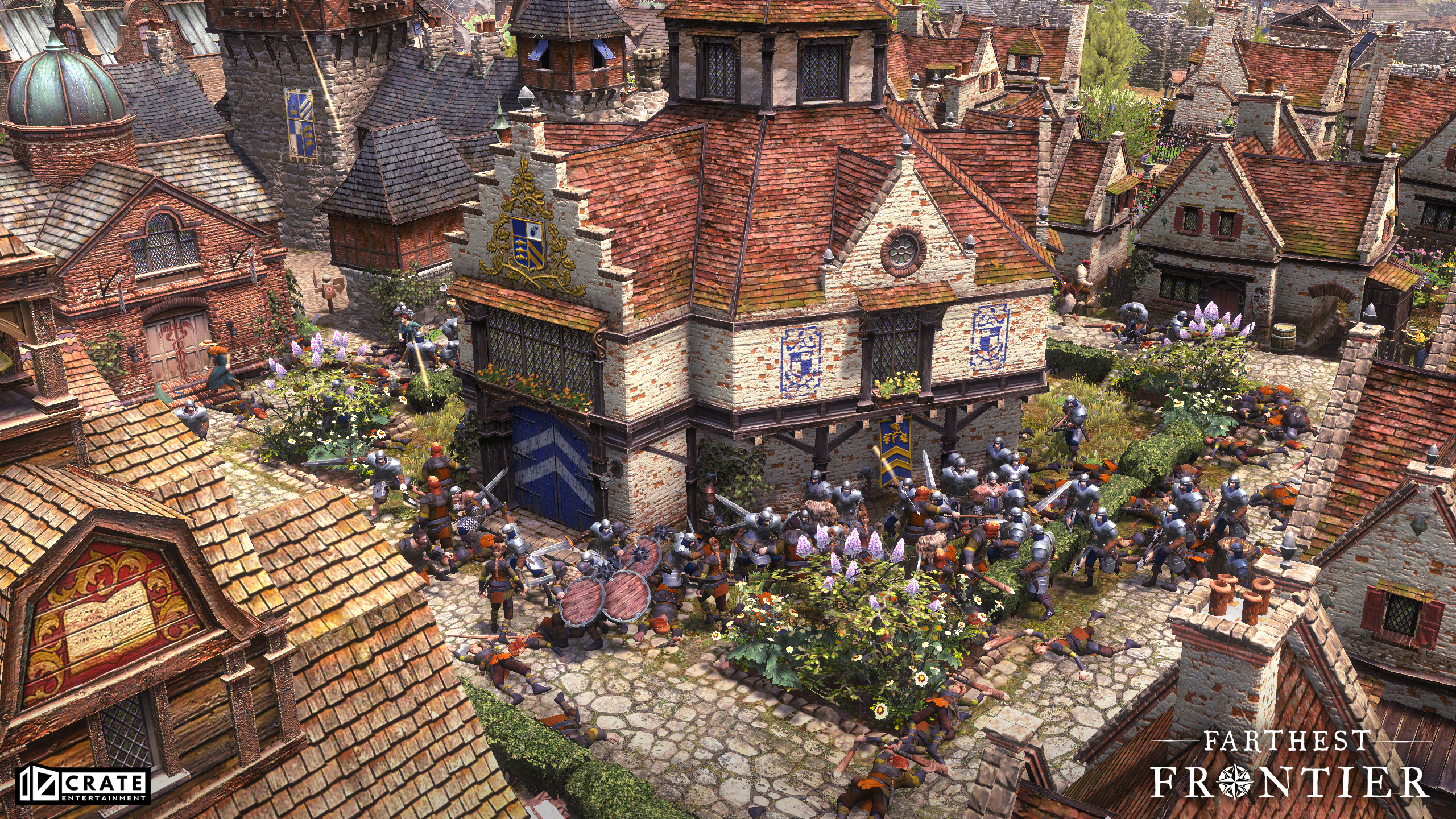Farthest Frontier is a fun, challenging, and exciting city builder with many layers of complexity. For new players, getting to grips with the mechanics while protecting and growing your village can feel overwhelming. That’s why we’ve put together this comprehensive year-one survival guide, packed with tips, tricks, and strategies to ensure your settlement thrives from the start.
Developed by Crate Entertainment, the creators of the acclaimed ARPG Grim Dawn, Farthest Frontier showcases the team’s dedication to quality and player satisfaction. Their commitment to regular updates and engaging mechanics ensures that the game evolves and improves, keeping players invested and excited.
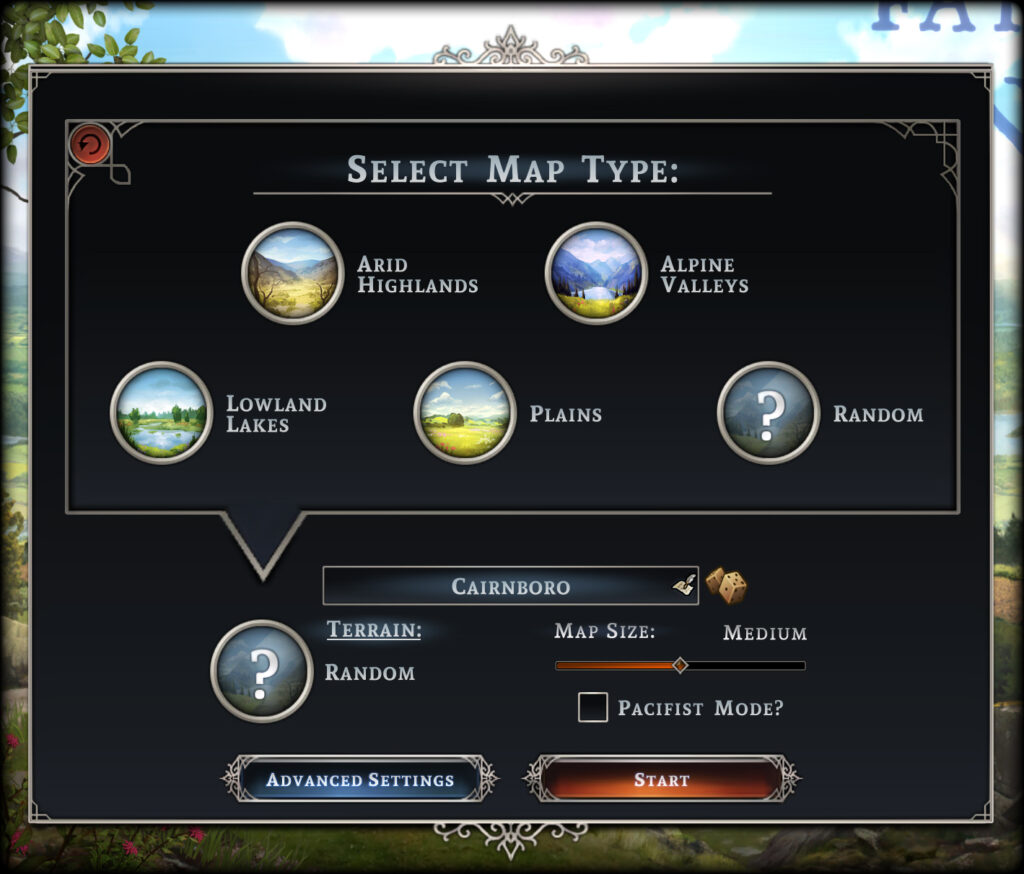
Farthest Frontier: Choosing the Right Map Biome
Farthest Frontier offers five different map biomes, each providing a unique experience:
- Idyllic Valley: The default biome with lush, fertile lands, abundant wildlife, and guaranteed access to all resources. Perfect for new players.
- Arid Highlands: Harsh and infertile with limited water and trees but rich in mineable resources like gold, iron, and sand. Suitable for experienced players with a focus on resource management.
- Alpine Valleys: Mountainous terrain makes farming and building a challenge, but ore, coal, and stone are plentiful.
- Lowland Lakes: Ideal for hunters and fishers, this biome offers fertile land, wildlife, and wood, with most resources available.
- Plains: Vast, highly fertile areas with abundant wildlife and clay but fewer trees and mineral resources.
Pro Tip: If you want an extra challenge, choose the random biome option and embrace the unknown!
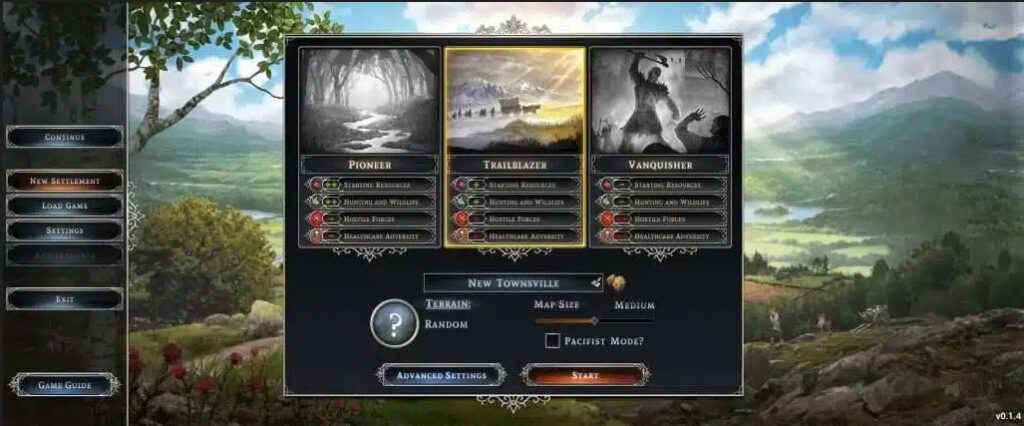
Game Settings: Picking Your Difficulty
There are three main difficulty levels:
- Pioneer: Easiest setting with abundant starting resources and fewer challenges. Ideal for casual players.
- Trailblazer: Balanced difficulty with moderate resources and challenges. Great for most players.
- Vanquisher: The hardest setting with scarce resources and increased hostile forces. Only for seasoned players.
You can also customize the experience in the Advanced Settings tab, mixing easier starting resources with harder raids, or opt for Pacifist Mode to disable aggressive animals and raiders.
Preparing Your Settlement: What to Do First
Once your map loads, your villagers will have scouted an area. Here’s how to approach this critical phase:
Reviewing the Scouted Area
- Take Your Time: The game is paused during this phase, so thoroughly investigate nearby resources.
- Look for Fertile Land: Press F to check fertility levels for farming. Aim for green, fertile areas.
- Find Water Sources: Press I to locate areas with a high water bonus for wells.
- Check for Key Resources: Look for lakes (fishing spots), hunting areas (deer or boar), and mineable resources (gold, iron, clay, stone).
- Avoid Hazards: Reroll maps with visible wolf dens to avoid early-game trouble.
Pro Tip: Prioritize maps with infinite deep mines (indicated by an Omega symbol) to ensure long-term resource sustainability.
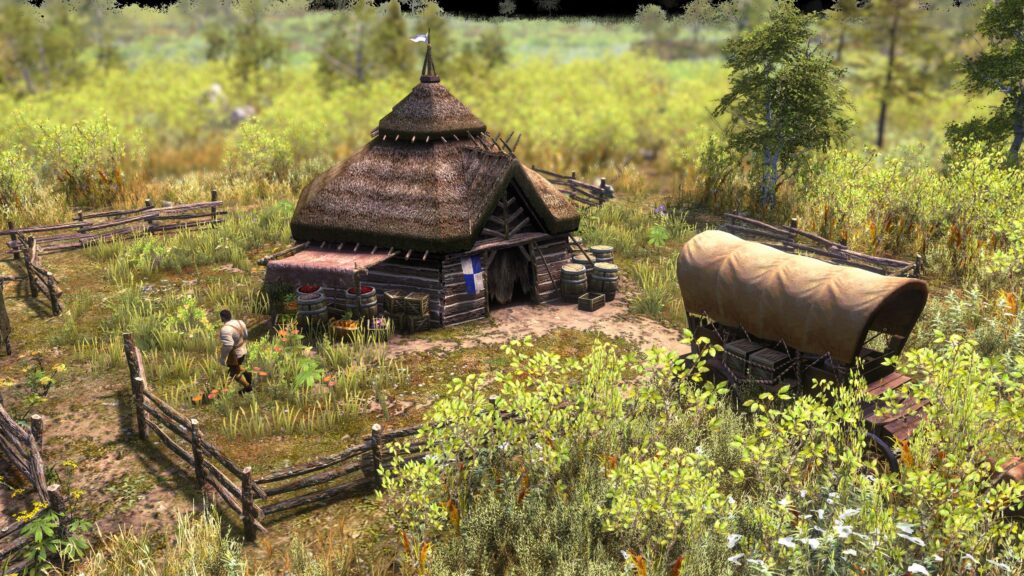
Placing Your Town Center
- Position the town center near fertile land, water, and resources, but avoid building directly on fertile land.
- Consider future expansion and layout. Ensure there’s room for residential, industrial, and farming zones.
- Natural defense areas, such as mountains, can provide strategic advantages, but flat open spaces are ideal for expansion.
Year 1: Surviving Your First Winter in Farthest Frontier
The first year is all about building your foundations and preparing for winter. Follow these steps:
Early Game Priorities
- Build Essentials First:
- Hunting Lodge: Secure a steady supply of meat and hides.
- Firewood Splitter: Ensure firewood is available for winter.
- Smokehouse: Preserve food to reduce spoilage.
- Well: Provide water for drinking and crafting.
- Gather Resources: Harvest wood and stone to support early construction.
- Place Initial Housing: Build six houses to accommodate your starting population and attract new settlers.
Key Structures to Add Before Winter
- Forager’s Shack: Focus on gathering herbs, reeds, and medicinal roots.
- Small Field: Start prepping soil for farming. A 5×5 or 6×6 field is ideal.
- Stockyard and Storehouse: Store building materials and supplies.
- Root Cellar: Reduce food spoilage during storage.
Winter Survival Checklist
- Ensure a steady food supply from hunters and foragers.
- Maintain firewood levels for heating.
- Use stored hides to craft clothing for warmth.
Essential Commands and HUD Overview
Understanding the game’s interface is key to success:
- Top Left: Villager count, happiness, food supply (with spoilage estimates).
- Top Center: Displays the time of year.
- Top Right: Shows basic resource totals.
- Bottom Right: Access commands like build menu, harvest tools, and road placement.
- Hotkeys: Use shortcuts like F for fertility view, G for desirability, and I for water view.
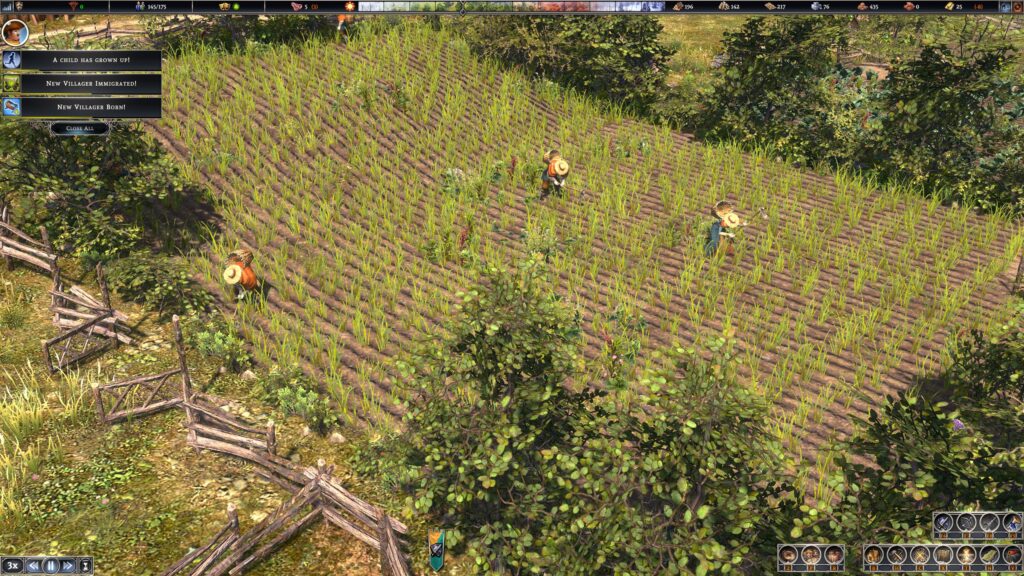
Farming Strategies for Long-Term Success
Farming is crucial for sustaining your village. Here’s how to optimize it:
- Rotation Strategy: Start with clover to boost fertility, then grow peas to clear weeds and rocks while enriching the soil.
- Efficient Workforce: Keep farm workers at 50-60% of the maximum required for optimal efficiency.
- Plan Ahead: Place a second field by Year 2 to expand your food production.
Building for the Future
As your settlement grows, start organizing your layout:
- Residential Areas: Keep homes near markets and desirable buildings like shrines and theaters.
- Industrial Zones: Place buildings like firewood splitters and sawmills far from homes to avoid negative desirability impacts.
- Defensive Structures: Fortify markets, storage areas, and your town hall with walls and towers.

Final Tips for Success in Farthest Frontier
- Desirability Matters: High desirability boosts house upgrades, increasing taxes and housing capacity. if you want to learn more, check out Tacticat’s great Farthest Frontier Desirability Tutorial on Youtube.
- Markets Are Key: Build markets in Year 2 to generate gold and distribute food efficiently.
- Adapt to Challenges: Early-game strategies focus on survival, but late-game planning should prioritize efficiency and defense.
Starting a settlement in Farthest Frontier can feel daunting, but with careful planning and strategic decisions, you can build a thriving village. Follow this guide to survive your first year and lay the foundation for long-term success. For more tips, strategies, and tutorials, explore our blog or subscribe to our channel.
Ready to tackle the frontier? Share your own tips and experiences in the comments below!
